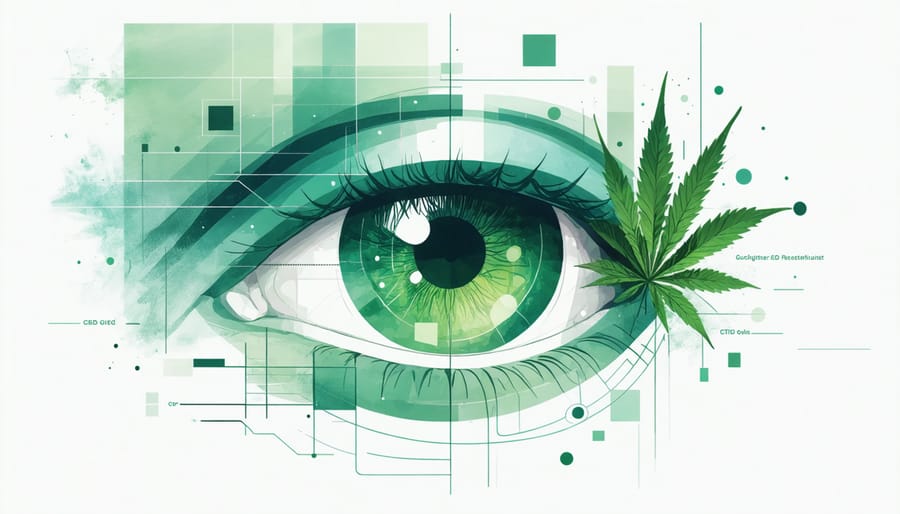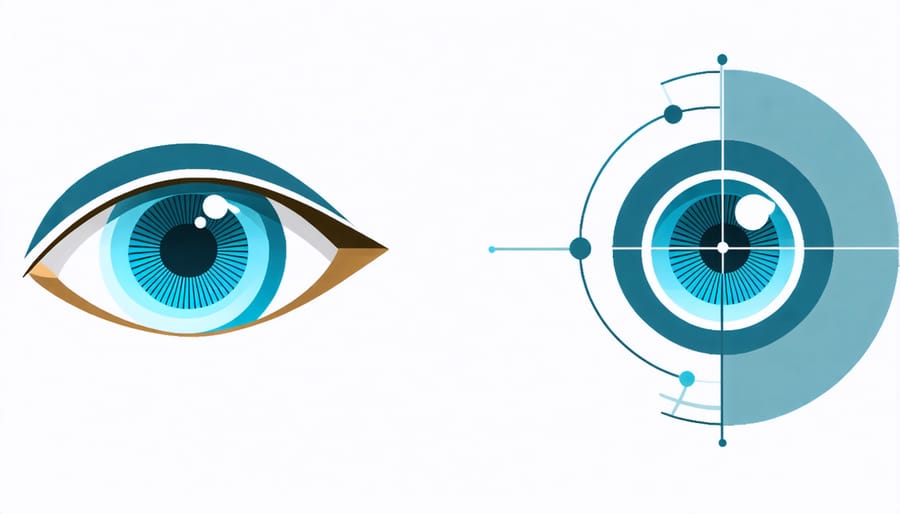Emerging research reveals CBD’s promising potential for protecting and enhancing eye health through multiple mechanisms. As a natural compound derived from hemp, CBDNorth and other high-quality CBD products have demonstrated anti-inflammatory and neuroprotective properties that may benefit various aspects of ocular health. From reducing intraocular pressure in glaucoma patients to protecting retinal cells from damage, CBD’s interaction with the endocannabinoid system offers exciting possibilities for maintaining optimal vision. While clinical studies are still ongoing, preliminary evidence suggests CBD could help manage symptoms of dry eye syndrome, age-related macular degeneration, and diabetic retinopathy through its antioxidant and anti-inflammatory effects. However, consulting an eye care professional before starting any CBD regimen is essential, as individual responses may vary and proper dosing is crucial for achieving desired benefits while minimizing potential side effects. This evidence-based exploration will examine the current scientific understanding of CBD’s role in eye health, providing you with practical insights for making informed decisions about incorporating CBD into your vision care routine.
Understanding CBD’s Impact on Eye Health
The Endocannabinoid System and Your Eyes
The endocannabinoid system (ECS) plays a crucial role in maintaining eye health and optimal vision function. This complex network of receptors, particularly CB1 and CB2, is found throughout various eye tissues, including the retina, cornea, and ciliary bodies. Understanding CBD’s effects on vision begins with recognizing how these receptors interact with both naturally produced endocannabinoids and plant-derived cannabinoids like CBD.
In the eye, the ECS helps regulate intraocular pressure, blood vessel function, and inflammatory responses. CB1 receptors are primarily located in the neural tissues of the eye, where they influence signal transmission and help protect nerve cells. CB2 receptors, meanwhile, are found in immune cells and play a vital role in managing inflammation and immune responses.
When CBD interacts with these receptors, it can help maintain balance in various eye functions. This interaction may support overall eye health by promoting proper pressure regulation, reducing inflammation, and potentially protecting delicate eye tissues from damage. The presence of these receptors throughout the eye’s structures suggests that the endocannabinoid system is integral to maintaining healthy vision.

Key Eye Health Benefits of CBD
Research has shown that CBD offers several promising benefits for eye health, particularly through its anti-inflammatory and neuroprotective properties. As inflammation is a key factor in many eye conditions, CBD’s natural ability to reduce inflammatory responses may help protect delicate eye tissues. Studies indicate that CBD can help regulate intraocular pressure, which is crucial for maintaining healthy vision and preventing certain eye conditions.
The compound’s antioxidant properties also play a vital role in protecting retinal cells from oxidative stress and damage, which are important overall eye health indicators. CBD’s neuroprotective qualities may help preserve optic nerve function and protect against vision loss associated with various eye conditions.
Additionally, CBD has shown potential in managing symptoms of eye strain and discomfort, particularly in our increasingly digital world. Its natural pain-relieving properties can help alleviate eye-related discomfort while supporting the eye’s natural healing processes. However, it’s important to note that while these benefits are promising, more research is needed to fully understand CBD’s long-term effects on eye health.

CBD Gummies vs. Other Forms for Eye Health
When considering CBD for eye health, various delivery methods are available, each with its unique advantages. CBD gummies have emerged as a popular choice due to their convenience, precise dosing, and pleasant taste. Let’s explore how gummies compare to other forms of CBD administration for eye health benefits.
CBD gummies offer several distinct advantages over other delivery methods. First, they provide consistent dosing, eliminating the guesswork often associated with oils or tinctures. Each gummy contains a pre-measured amount of CBD, making it easier to maintain a regular dosing schedule and track your intake.
The digestive process of gummies allows for gradual CBD release into the bloodstream, potentially providing longer-lasting effects compared to sublingual oils or vaping. This sustained release can be particularly beneficial for maintaining consistent CBD levels throughout the day to support eye health.
Other common CBD delivery methods include:
– Sublingual oils/tinctures: Quick absorption but can be messy and difficult to dose precisely
– Topical applications: Limited effectiveness for internal eye health
– Vaping: Rapid effects but potential respiratory concerns
– Capsules: Similar benefits to gummies but less enjoyable to consume
Gummies also offer better taste and discretion compared to oils or tinctures, which can have an earthy flavor that some find unpleasant. This improved palatability often leads to better consistency in taking the supplement, which is crucial for maintaining eye health benefits.
However, it’s important to note that gummies may take longer to show initial effects compared to sublingual methods, as they must first pass through the digestive system. They also typically contain sugar, which should be considered for individuals managing diabetes or watching their sugar intake.
When selecting CBD gummies for eye health, look for products that:
– Use high-quality, pure CBD
– Contain appropriate dosages
– Are third-party tested
– Include beneficial ingredients for eye health
– Have clear labeling and ingredient lists
Remember to consult with your healthcare provider before starting any CBD regimen, especially if you have existing eye conditions or are taking other medications.
Clinical Research and Eye Conditions
Glaucoma and Intraocular Pressure
Research into CBD’s impact on glaucoma has yielded mixed results, particularly concerning its effects on intraocular pressure (IOP). While initial studies suggested that CBD might help reduce IOP, more recent research indicates a more complex relationship between CBD and glaucoma management.
Studies have shown that while THC (another cannabis compound) can effectively lower IOP, CBD might actually counteract this effect and could potentially increase eye pressure in some cases. This finding is particularly important for glaucoma patients, as maintaining proper IOP levels is crucial for preventing further vision damage.
However, CBD’s neuroprotective properties may still offer benefits for eye health through other mechanisms. The compound’s anti-inflammatory and antioxidant properties could help protect retinal cells from damage, though more research is needed to fully understand these effects.
For individuals considering CBD for glaucoma management, it’s essential to consult with an eye care professional before starting any new treatment. They can provide personalized advice based on your specific condition and help monitor any changes in your IOP levels. Regular eye pressure measurements and comprehensive eye exams remain the cornerstone of effective glaucoma management, regardless of supplementary treatments.
Current medical guidelines still recommend traditional glaucoma medications as the primary treatment approach, with any complementary therapies requiring careful medical supervision.

Inflammation and Retinal Health
Research has shown that CBD’s anti-inflammatory properties may play a crucial role in protecting retinal health and preventing various eye conditions. The retina, a delicate layer of tissue at the back of the eye, is particularly susceptible to inflammation-related damage, which can lead to vision problems and serious eye diseases.
Studies indicate that CBD interacts with the endocannabinoid system present in ocular tissues, helping to regulate inflammatory responses. This interaction may be particularly beneficial for conditions like diabetic retinopathy and age-related macular degeneration, where inflammation is a key contributing factor to vision deterioration.
In laboratory studies, CBD has demonstrated the ability to reduce oxidative stress and neuroinflammation in retinal cells, potentially offering protection against damage caused by various environmental and physiological factors. These protective effects are attributed to CBD’s ability to modulate immune responses and decrease the production of pro-inflammatory molecules in the eye.
Clinical research has also suggested that CBD’s anti-inflammatory properties may help manage symptoms of uveitis, an inflammatory condition affecting the middle layer of the eye. While more extensive human trials are needed, preliminary findings indicate that CBD’s natural anti-inflammatory action could provide a promising complementary approach to conventional treatments for inflammatory eye conditions.
It’s important to note that while these findings are encouraging, any CBD use for eye health should be discussed with an eye care professional to ensure safe and appropriate implementation.
Safety Considerations and Usage Guidelines
While CBD gummies show promise for eye health, it’s crucial to approach their use with proper caution and understanding. Always consult with your healthcare provider before incorporating CBD gummies into your eye health routine, especially if you have existing eye conditions or are taking other medications.
Start with a low dose (typically 5-10mg) and gradually increase if needed while monitoring your body’s response. CBD can interact with certain medications, particularly those metabolized by the liver, so disclosure to your healthcare team is essential. Choose products from reputable manufacturers who provide third-party lab testing results and clearly state CBD content per gummy.
Common side effects may include dry mouth, drowsiness, and temporary changes in appetite. While these effects are generally mild, discontinue use and seek medical attention if you experience any adverse reactions. Pregnant or nursing individuals should avoid CBD products, and those with liver conditions should exercise extra caution.
CBD gummies should complement, not replace, traditional eye care practices. Maintain your regular eye examinations and prescribed treatments. Store gummies in a cool, dry place away from direct sunlight and out of reach of children. Pay attention to expiration dates and proper storage conditions to maintain product efficacy.
For optimal results, take CBD gummies consistently at the same time each day. Monitor your eye health progress and keep a journal of any changes you notice. Remember that individual responses vary, and results may take several weeks to become apparent. If you don’t experience desired benefits after 8-12 weeks of consistent use, consult your eye care professional about alternative approaches.
While research on CBD’s effects on eye health shows promise, particularly in areas of inflammation reduction and neuroprotection, it’s important to approach CBD gummies for eye health with measured expectations. Current evidence suggests potential benefits for specific eye conditions, but more comprehensive clinical studies are needed to fully understand the scope and effectiveness of CBD in eye care. When considering CBD gummies for eye health, consult with an eye care professional to determine if they’re appropriate for your specific situation. Remember that CBD supplements should complement, not replace, traditional eye care practices such as regular check-ups, proper nutrition, and protective measures. As research continues to evolve, maintaining a balanced perspective between emerging alternative treatments and established eye care protocols remains crucial for optimal vision health.

